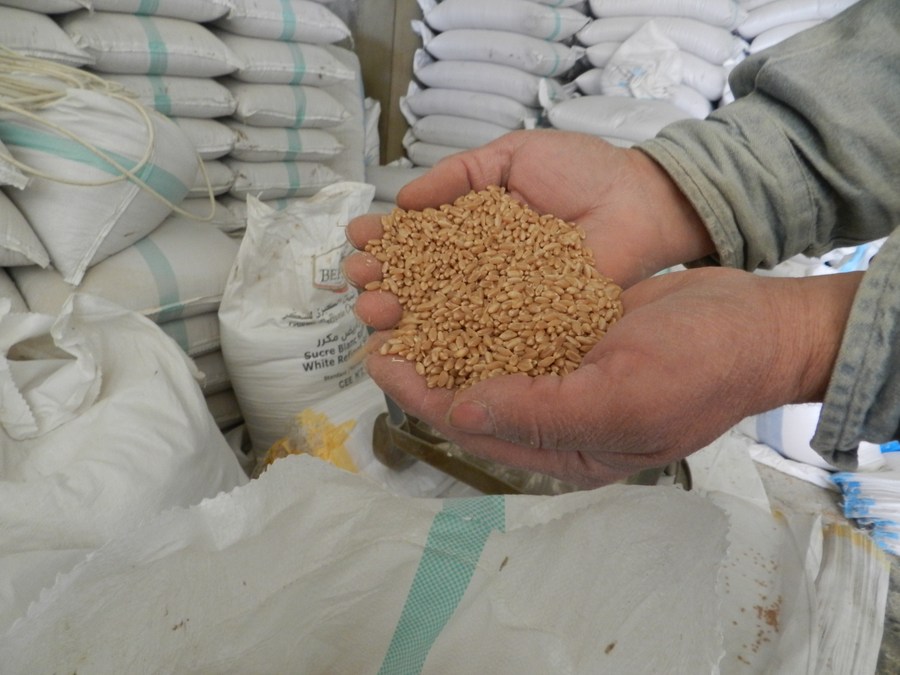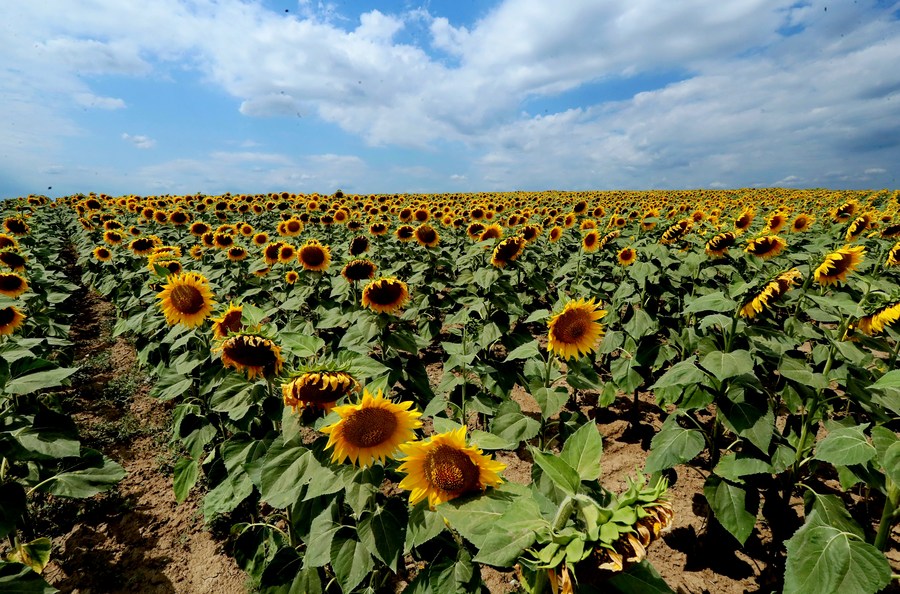FAO chief economist warns of Ukraine conflict's possible heavy toll on food security

The owner of a warehouse of wheat and grains displays Ukrainian wheat in Hasbaya, southern Lebanon, on Feb. 28, 2022. (Photo by Taher Abu Hamdan/Xinhua)
On the basis of their already elevated baseline values, wheat price would increase by 8.7 percent in a moderate-shock scenario and by 21.5 percent in a severe-shock scenario, the FAO chief economist estimated.
UNITED NATIONS, March 16 (Xinhua) -- The chief economist of the Food and Agriculture Organization (FAO), Maximo Torero, on Wednesday warned of the possible heavy toll of the Ukraine conflict on world food security.
To assess the potential impact on international food prices caused by a conflict-induced reduction in cereal and vegetable oil exports from Ukraine and Russia, simulations have been carried out, he said.
On the basis of their already elevated baseline values, wheat price would increase by 8.7 percent in a moderate-shock scenario and by 21.5 percent in a severe-shock scenario, he told reporters at UN Headquarters in New York.
For maize, the increase would be 8.2 percent in the moderate case and 19.5 percent in the severe scenario. For other coarse grains, prices would rise by 7 to 19.9 percent, and for oilseeds by 10.5 to 17.9 percent, he said.
Globally, in terms of impacts on food security, in the moderate scenario, the number of undernourished people would increase by 7.6 million people, while this level would rise to 13.1 million people in the severe-shock setting, said Torero.
Moreover, additional upward pressure on fertilizer prices has stemmed from disruptions and high transportation costs following the imposition of export restrictions and due to sharp increases in bulk and container freight rates caused by the COVID-19 pandemic, he said.
International food prices had already reached an all-time high even before the conflict in Ukraine. The FAO Food Price Index averaged 140.7 points in February, up 3.9 percent from January, and 20.7 percent above its level a year earlier.

Photo taken on July 9, 2019 shows sunflower fields in Odessa, Ukraine. (Xinhua/Chen Junfeng)
In 2021, Russia and Ukraine ranked amongst the top global exporters of wheat, maize, rapeseed, sunflower seeds, and sunflower oil. For its part, Russia also stood as the world's top exporter of nitrogen fertilizers and the second-largest supplier of both potassic and phosphorous fertilizers, he said.
Overall, almost 50 nations are dependent on Russia and Ukraine for over 30 percent of their wheat import needs. Of these, 26 countries depend on the two countries for over 50 percent of their wheat import needs, he said.
Wheat is a staple food for over 35 percent of the world's population. The crisis represents a challenge on food security for many countries, especially for low-income, food import-dependent countries and vulnerable populations, said Torero.
In the wheat and meslin sector, Russia was the top global wheat exporter, shipping a total of 32.9 million tons of wheat and meslin, or the equivalent of 18 percent of global shipments in 2021. Ukraine was the fifth-largest wheat exporter in 2021, exporting 20 million tons of wheat and meslin and with a 10 percent global market share, he said.
Photos
Related Stories
- Local residents' life in Donetsk amid Russia-Ukraine conflict
- Another flight carrying Chinese citizens evacuated from arrives safely
- Envoy clarifies China's Ukraine stance
- China having prior knowledge of, supporting Ukraine war "purely disinformation": Chinese ambassador to U.S.
- Facts about Russia-Ukraine conflict: Ukrainian negotiator says to continue peace talks
Copyright © 2022 People's Daily Online. All Rights Reserved.










